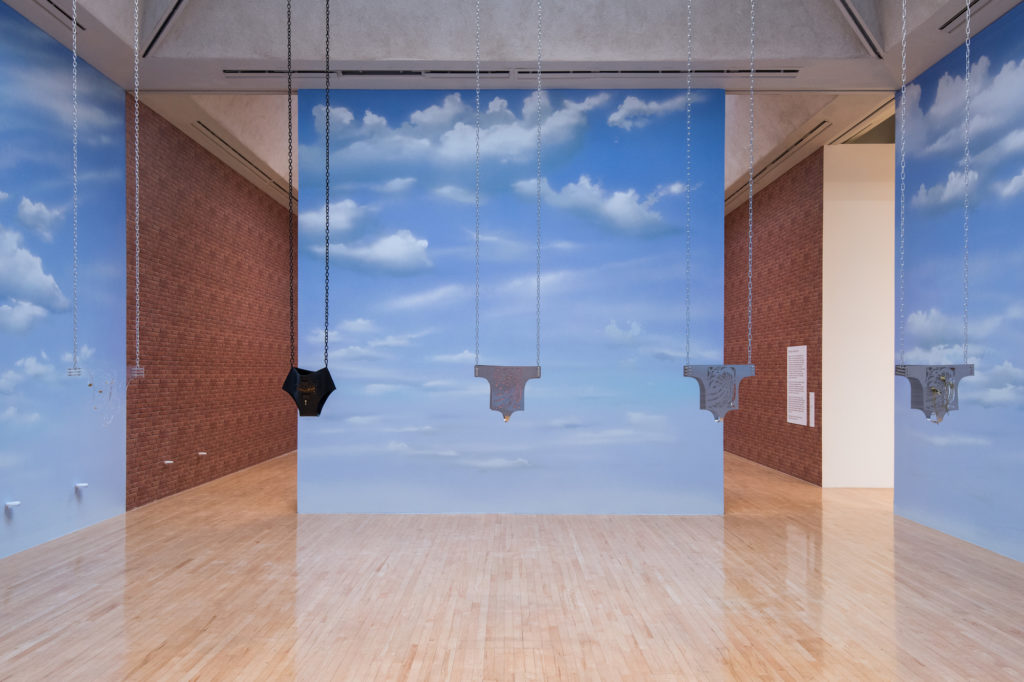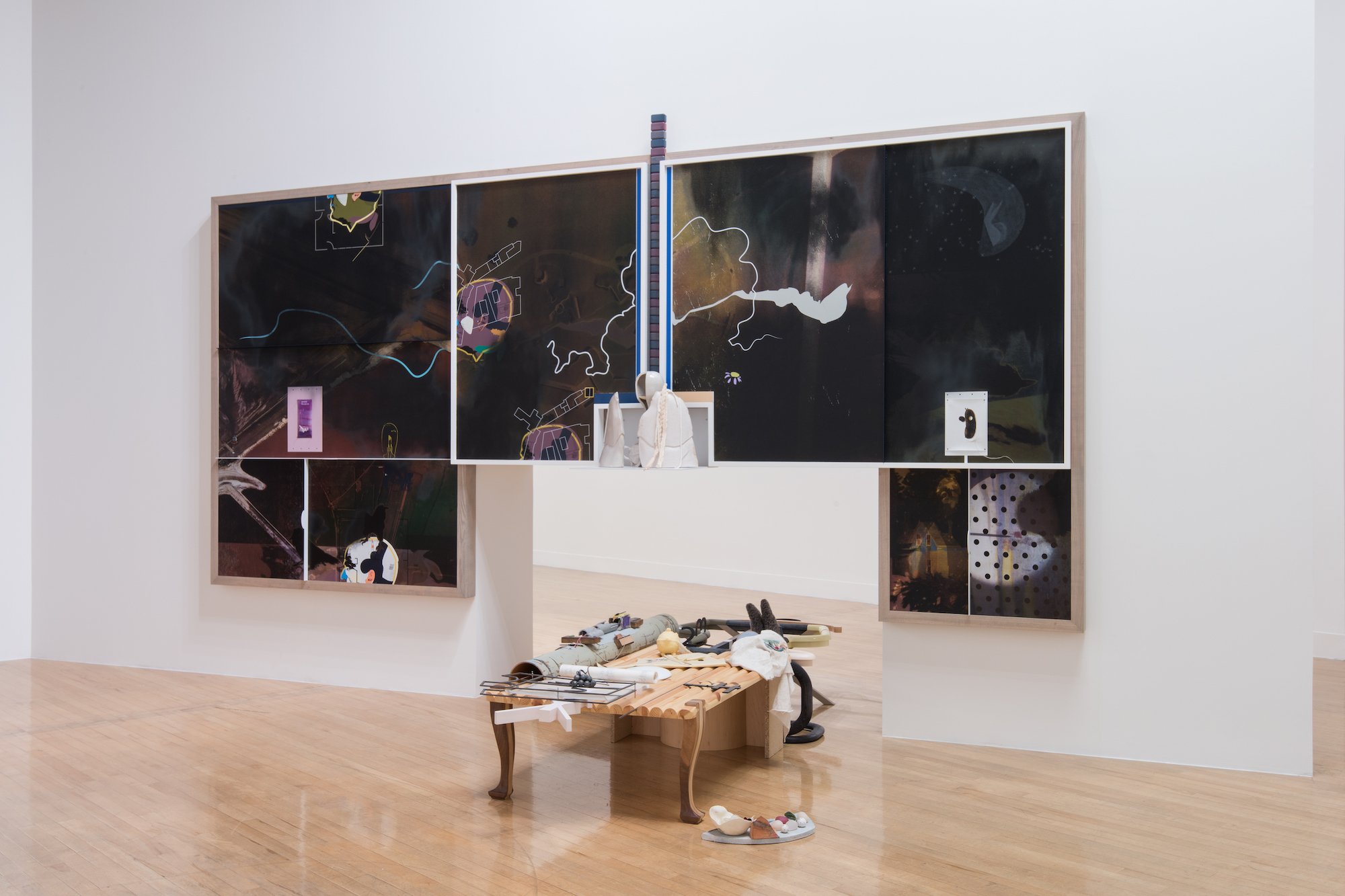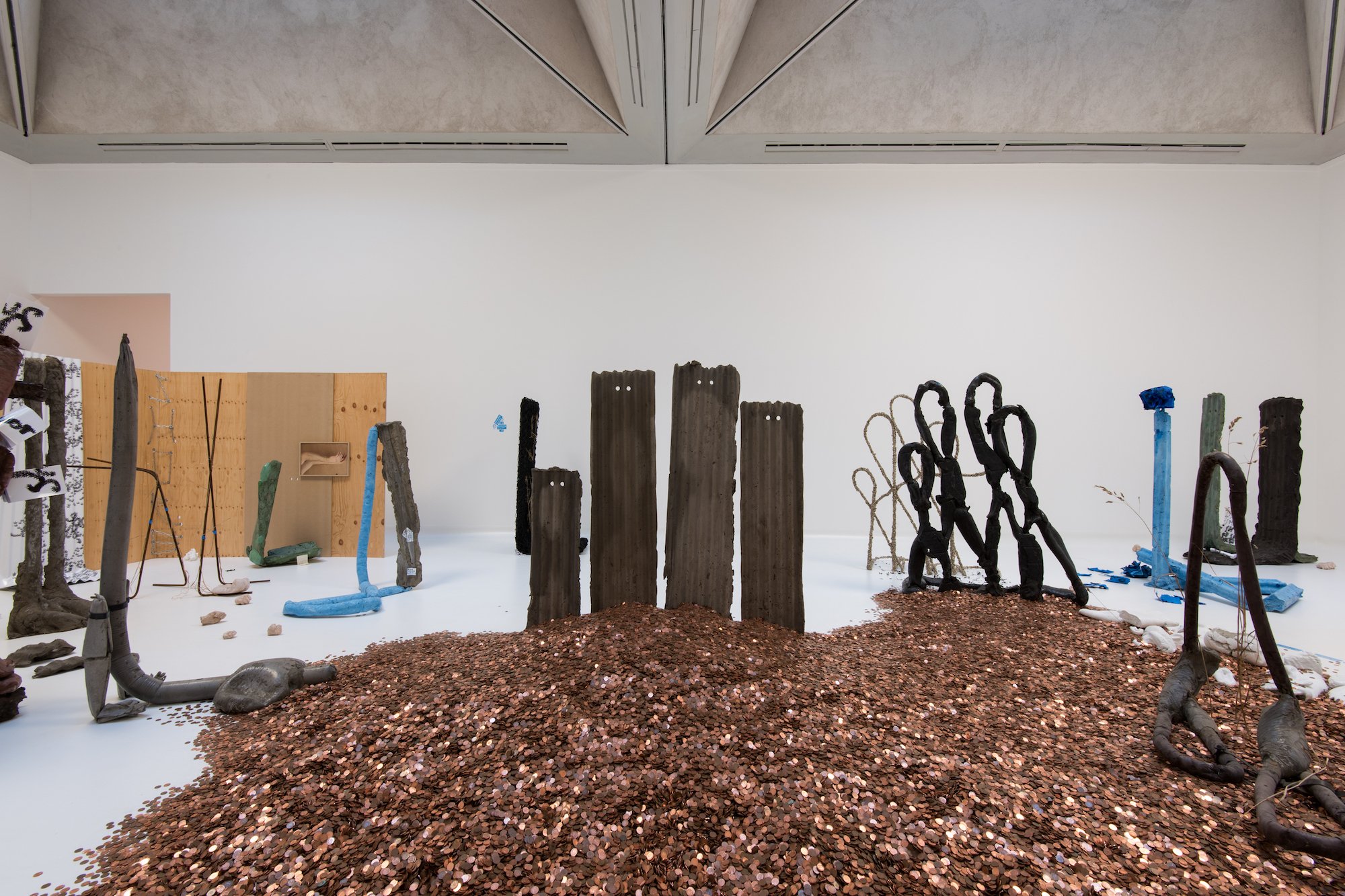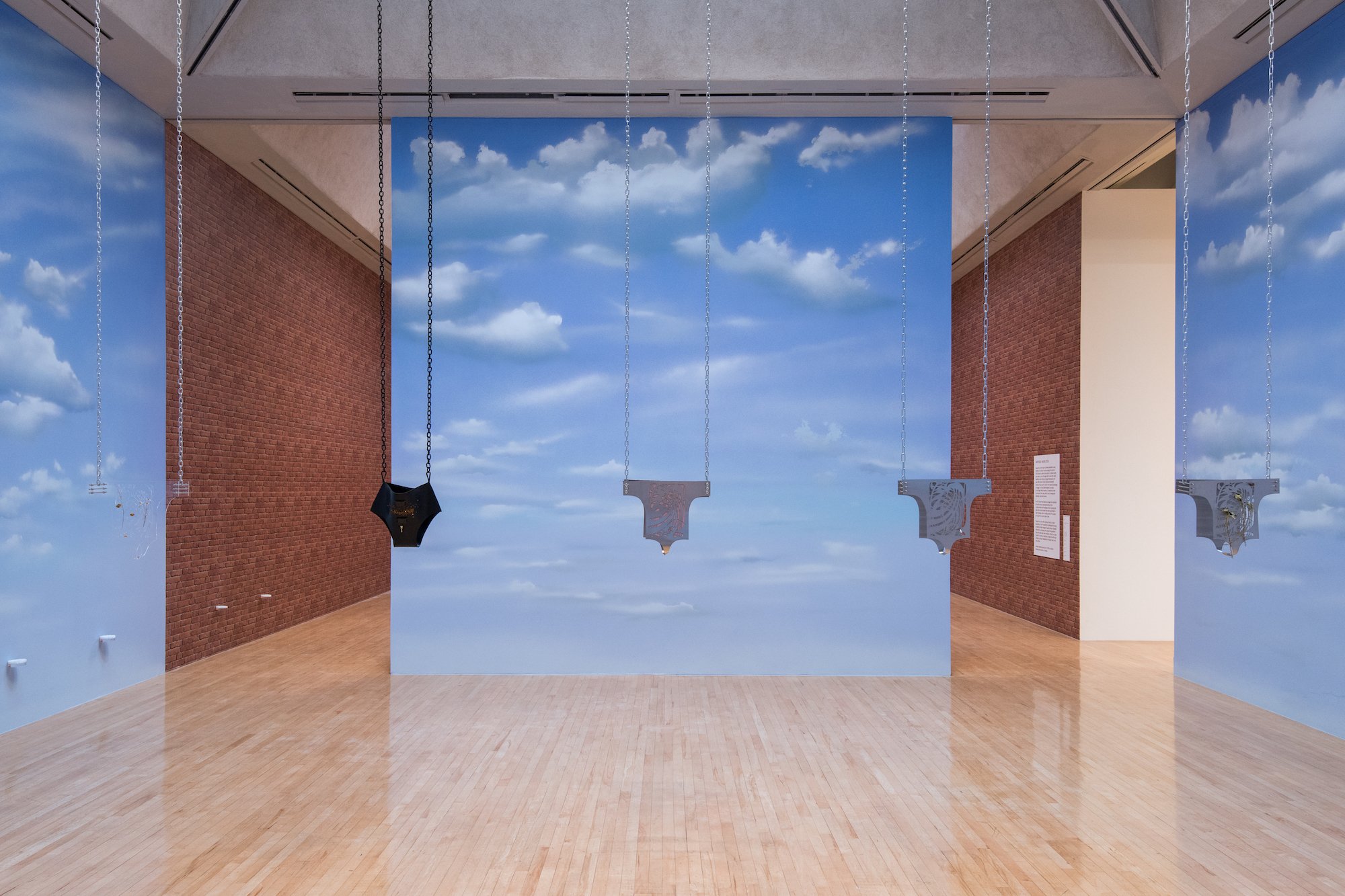On View
Turner Prize 2016: Post-Readymade Assemblages and Giant Buttocks for the Snapchat Generation
As the show opens at Tate Britain, we take a closer look at this year’s contenders.

As the show opens at Tate Britain, we take a closer look at this year’s contenders.

Hettie Judah

Hands, words, lichen, rebar, knives, bodies, graphics, vandalism, weeds, snakeskin, mundanity: You want themes from this year’s Turner Prize? Go ahead: chuck a dart at the pin-board. That’s if you can take your eyes off the giant polystyrene buttocks parked slap in the middle of Anthea Hamilton’s display and which, at the time of writing, had led every report thus far in the British press.
Hamilton, together with Josephine Pryde, Helen Marten, and Michael Dean form a shortlist less remarkable for the preponderance of female artists (technically, fewer than 2015 which featured three plus a mixed collective) than for the number of nominated shows that took place outside Britain.
Hamilton earned her nod for the magnificently titled “Lichen! Libido! Chastity!” at SculptureCenter, New York; Pryde for “Lapses in Thinking by the Person I am” at CCA Wattis, San Francisco; Marten for her presentation at the 56th Venice Biennale and for “Eucalyptus, Let Us In” at Greene Naftali, New York; Dean for “Qualities of Violence” at de Appel arts centre, Amsterdam and “Sic Glyphs” at South London Gallery.
That’s one show out of six on home turf, and three outside Europe: well beyond the scope of, for example, an art critic servicing the country’s domestic media. We’re talking serious air miles, and a five-star Airbnb rating here. God help you if you’re just a member of the public. Didn’t make it to the CCA Wattis this season? Pah! Don’t tell me you know British art. Amateur.

Installation view of Helen Marten’s exhibition at the Turner Prize 2016. Courtesy Joe Humphrys ©Tate Photography.
Now that these exotic fruits have washed back to home shores, what do we find? Largely a post-readymade era of sculptural assemblage: piles of associative debris that look to be found objects but that have, instead, been lovingly crafted. Helen Marten is here pre-eminent. As a sheer exercise in making, her suite of sculptural works leads the Turner field. Marten borrows the skin and formal vocabulary of the known world—sanitary fittings, the bent metal tubes of hospital fixtures, games boards, wooden furniture, manufacturing equipment, the body—and turns them to elusive ends. One faces her work like a dementia patient or Oliver Sachs case study: detecting familiar visual language but somehow unable to decode it.
Marten’s technical arsenal is impressive—elements in ceramic are precise, and fired with studio-made glazes, carved wood is so smooth it nestles almost unperceived alongside plastic, everything is pressed and milled and punched just so. Where elements are unclean and unfinished—fetishes lashed together from worn insoles, feathers and ribbon—it feels significant.

Installation view of Michael Dean’s exhibition at the Turner Prize 2016. Courtesy Joe Humphrys ©Tate Photography.
In their uncanny tableaux patched from materials not quite of the known world, both Marten and fellow nominee Michael Dean evoke an alternate reality, bringing to mind the excavation sites in China Miéville’s City & the City or Russell Hoban’s Riddley Walker. But where Marten’s work is all hermetic polished edges, and speaks of diligence and dreamscapes, Dean’s feel roughly spat and extruded: pouchy sausages of concrete spool up and down bent rebar and across nylon mesh (both patchily visible) looped in wordlike forms in the air, reminiscent of writing from the red tip of a sparkler. Spews of concrete, still carrying shivers of cellophane, loll around a vast pile of copper coins. The topography is wasteland. A barricade built of MDF, ply, corrugated metal and more concrete (some shaped by a stomping boot) is drilled with spy holes so that we see the patch of open space at the heart of the gallery before we attain it.
While it may look scrappy, Dean’s attention to detail is absolute. An ink-soaked book topping off one “glyph” is a custom production, its pages covered in nonsense lettering. Stickers and incident tape carry familiar utilitarian graphics but the words are all variants of shore/sure/for sure. In terms of ideas, however, Dean’s work overstretches connections, puns and coincidence. There’s something akin to manic thinking—that feverish 3am logic that makes sense where perhaps none is earned—at work here. And the pile of coins? It’s 1p less than the minimum a family of four needs annually to survive on. In the face of yawning inequality and its attendant impact in the arts and way, way beyond, it’s nice to have but doesn’t feel like the most nuanced or forceful gesture.

Installation view of Josephine Pryde’s exhibition at the Turner Prize 2016. Courtesy Joe Humphrys ©Tate Photography.
Josephine Pryde’s photo series Hands “Für Mich” show female hands touching objects ranging from an iPad to a piece of driftwood—both an acknowledgment of our increasingly haptic culture, and of the conventions of Instaland in which bloggers portray themselves cupping and cradling “precious” objects (chia pudding, for example) or crushing them against their torso in demonstrations of passion and/or emotional engagement. It’s neatly observed. The graffiti-tagged miniature train that ran around tracks to further infantilise spoon-fed visitors in the show’s previous incarnations is here parked (one imagines it would have been hard-pushed to handle Tate’s footfall). Resting against the wall, a series of readymade countertops display the ultimate in lo-tech photography—bleaching caused by sunlight between May and September of this year.

Installation view of Anthea Hamilton’s exhibition at the Turner Prize 2016. Courtesy Joe Humphrys ©Tate Photography.
Anthea Hamilton has bisected her space. One side is wallpapered in a brick print, through which the big bottom pokes, alongside a more diminutive tailored “brick” suit. The other side carries a sky print from a sunny day in June. In the middle of the “sky” room hangs a suite of chastity belts engraved with a motif derived from Hector Guimard’s designs for the Paris Metro. The twisted gussets of the metal and acrylic chastity belts, a pair of machetes planted in the upper wall and the invitation proffered by the parted butt cheeks all make one acutely aware of bodily sensation. This mix of pleasure and pain, offset by the jaunty wallpaper, brings Hamilton back to the loving and accepting embrace of disco, though here in a raw, very physical incarnation far removed from Travolta cliché.
The usually camera-averse Tate is this year opening the Turner Prize show up to the Snapchat generation: Hamilton’s Project for a Door (After Gaetano Pesce)—a.k.a. the giant butt—is a shoe-in for the Instagram vote.
The Turner Prize 2016 exhibition is on view at Tate Britain, London, from September 27, 2016 – January 2, 2017.